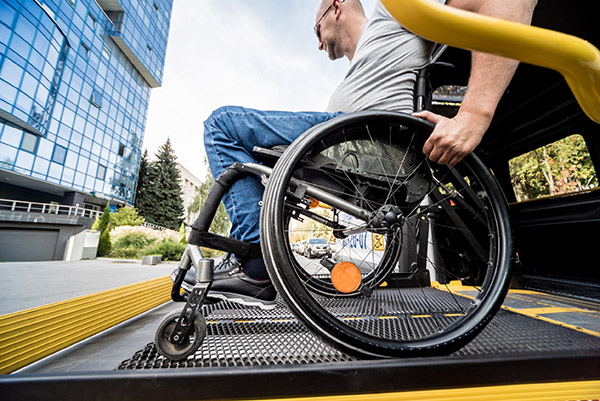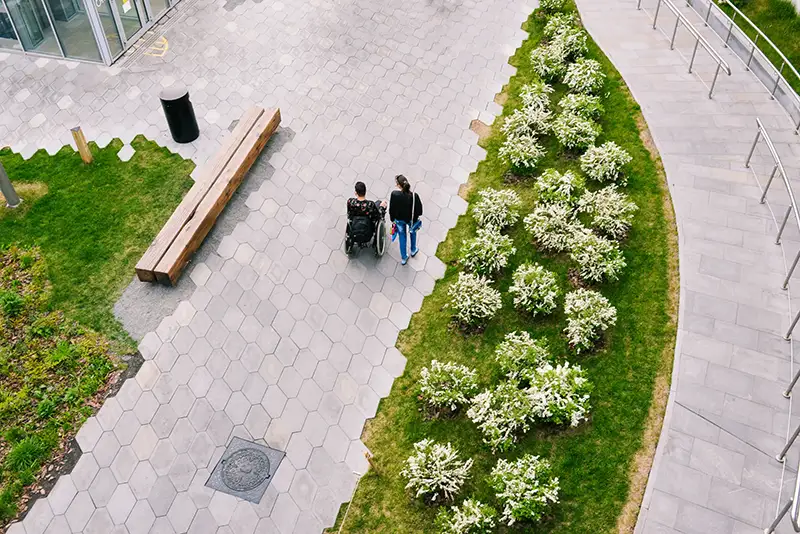
Inclusive Urban Mobility: Ensuring Accessibility and Equality for All
03 of August of 2023
Inclusive urban mobility is more than just an ethical aspiration; it’s a fundamental pillar of equitable and sustainable urban living. It acknowledges that urban mobility shouldn’t be a privilege enjoyed by some but a right accessible to all. The development of cities in the 21st century thus hinges significantly on this principle. However, creating truly inclusive urban environments is a complex challenge involving various intersecting issues such as city planning, social inequality, technological advancement, and public policy.
What Is Inclusive Urban Mobility?
From the onset, it’s crucial to establish what we mean by “inclusive urban mobility.” It refers to the provision of safe, affordable, accessible, and sustainable transport systems for all city residents, regardless of their age, gender, physical abilities, or socio-economic status. It is an ambitious goal that envisions a city where every individual can navigate and utilize public spaces freely and without hindrance.
To understand the importance of this, one must appreciate the role of mobility in our daily lives. It’s through mobility that we access essential services, opportunities, and social interactions. Restricted or inefficient mobility can, therefore, significantly impede a person’s quality of life and socio-economic prospects.
How Attainable Is It?
Despite its importance, inclusive urban mobility is still a lofty goal in many cities worldwide. A variety of obstacles stand in the way, including inadequate infrastructure, lack of accessible public transport, financial constraints, and societal attitudes towards disability, gender, and age. These barriers can hinder many people from fully participating in urban life, leading to social exclusion and inequality.
Yet, a city is more than just a collection of infrastructure. It is a living, breathing entity, a collection of people and their interactions. Therefore, to address the challenges, we need to adopt a people-centered approach that respects and appreciates the diversity of urban dwellers.
Starting With the Design
The design of city infrastructure is an excellent place to start. Universal design principles aim to create environments that are accessible, understandable, and usable by all people, to the greatest extent possible, without the need for adaptation or specialized design. This approach extends to all elements of a city, from pedestrian walkways and buildings to public transportation and digital interfaces.
For example, the design of public transportation systems should consider individuals with physical disabilities. Buses, trains, and stations should be equipped with features like ramps, tactile paving, and audible signals to facilitate navigation and usage by those with mobility or sensory impairments. Likewise, affordable fare schemes can make public transportation more accessible to low-income individuals, thereby promoting social inclusion.

The Role of Technology
Technological advancements also hold great promise for inclusive urban mobility. Autonomous vehicles, for instance, could revolutionize transportation for those unable to drive due to physical disabilities or age-related conditions. Moreover, digital applications can provide real-time information about public transport, making it easier for everyone to navigate cities.
However, it’s essential to recognize that technology is not a panacea. While it can help create more inclusive cities, it must be deployed carefully to avoid exacerbating existing inequalities. For instance, relying heavily on digital technologies might marginalize those who lack digital literacy or access to internet services, such as older adults or low-income individuals.
Far-Reaching Economic Benefits
By enabling broader access to transportation, cities can unlock the potential of marginalized populations, allowing them to access job opportunities, educational institutions, and healthcare facilities. When individuals have the means to travel conveniently and affordably, they can actively participate in the workforce and contribute to the economic growth of their communities. This, in turn, leads to reduced poverty rates and increased overall prosperity.
Additionally, by prioritizing eco-friendly mobility options, cities can mitigate the negative environmental impacts of transportation and work towards achieving carbon neutrality goals.
Social Equity and Beyond
The concept also extends beyond physical transportation. It encompasses the idea of creating inclusive public spaces that cater to the needs of diverse populations. Parks, squares, and recreational areas should be designed with universal accessibility in mind, ensuring that people of all ages and abilities can enjoy them. Incorporating features such as seating areas, restrooms, and shade structures can enhance the comfort and convenience of these spaces for everyone.

It is also a means to address historical inequalities and empower marginalized communities. By prioritizing the needs of vulnerable groups, such as people with disabilities, older adults, and low-income individuals, cities can foster a more inclusive and compassionate society. This requires proactive engagement with community members and stakeholders to understand their unique challenges and perspectives. By actively involving these voices in the planning and decision-making processes, cities can ensure that the solutions implemented truly address their needs.
For example, Van Express Movers NJ suggests that consulting with organizations or companies specializing in accessible moving services can provide valuable insights on making the moving process more inclusive and accommodating for individuals with disabilities or mobility challenges. By seeking advice from such experts, cities can enhance their understanding and develop tailored solutions that truly empower and support marginalized communities during the relocation process.
The Global Picture
Inclusive urban mobility is not limited to individual cities or regions; it requires collaboration and knowledge-sharing at a global scale. Cities around the world can learn from each other’s successes and challenges in creating inclusive transportation systems. International organizations and networks dedicated to sustainable development can facilitate this exchange of best practices and promote global standards.
Ways to Ensure Accessibility and Equality
Public policy plays a vital role in promoting inclusive urban mobility. Governments can enact and enforce laws to ensure that city planning and transportation services adhere to inclusivity principles. Moreover, they can provide funding and incentives for the development and deployment of inclusive technologies and infrastructures.
The task of creating truly inclusive cities is indeed challenging, but the benefits are immense. It enables all citizens to participate fully in city life, boosting their quality of life and socio-economic prospects. Moreover, it promotes social cohesion, making cities more vibrant and resilient.
In Conclusion
Achieving inclusive urban mobility requires concerted efforts from city planners, policymakers, technologists, and citizens. It’s a journey rather than a destination, one that necessitates continuous learning, adaptation, and improvement. But with the right approach and commitment, we can create urban environments where everyone, regardless of their circumstances, can move freely and with dignity.





There are no comments yet